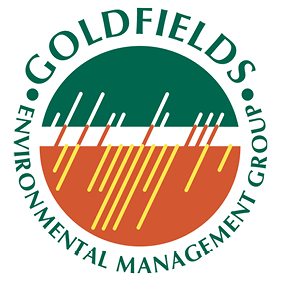Keynote speaker - Ian de Bruyn
Principal Consultant, Geotechnical Engineering
Topic: Building useful geotechnical models
Time: Wednesday, 27 October | 1.15pm
Abstract:
The success of any geotechnical design is dependent on the geotechnical model used in the design assessments. No matter the methodology adopted, the budget allocated, or the expertise assembled for the design analyses, an unsuitable geotechnical model will result in a sub-optimal outcome or misleading results. The nature of any geotechnical model must be dependent on the type, amount, and spatial distribution of the information available and the purpose for which the model is constructed. A geotechnical model for an open pit must allow for the generation of slope design parameters that are most appropriate for the geotechnical environment, taking into account the dominant mode(s) of failure, the level of confidence in the data and acceptable levels of risk. It may require a significant amount of evaluation, interpretation, and judgement to develop a model that is fit-for-purpose, even for one that appears simple. It is better for it to be approximately “right” than precisely “wrong”!
This paper discusses the conception and development of appropriate geotechnical models for slope design. It considers the types of information available, the level of study, the shape of the excavation, controlling failure mechanisms and uncertainties. It discusses how a model can be spatially defined and how the data can be best used to characterise each zone. The lithology, alteration, structural and hydrogeology models that contribute to the geotechnical model, and the likely slope failure mechanisms, are important in selecting appropriate software or analysis methods that should be employed for slope design analyses. In this context, typical pitfalls in geotechnical models are examined.
Sandra Linero
Principal Consultant, Geotechnical Engineering
Topic: Estimation of shear strength of very coarse mine waste
Co-authors: LF Contreras (SRK Consulting), J Dixon (Fortescue Metals Group)
Time: Wednesday, 27 October | 11.45am
Abstract:
Evaluating the shear strength of mine waste rock containing particles of metric scale is challenging because commercial laboratory testing devices can only accommodate samples composed of particles a few centimetres in size. The shear strength empirical model of Barton & Kjærnsli (1981) is therefore frequently used to assess the non-linear shear strength of very coarse granular material for stability assessment of very high mine waste dumps. In this article, we discuss practical methods for collecting the information required as input to the model, and we also illustrate the implementation of deterministic and probabilistic approaches for estimating the shear strength of several waste materials from a banded iron formation located in the Pilbara region of Western Australia.
Justine Paul
Senior Consultant, Geotechnical Engineering
Topic: The importance of robust validation of geotechnical data and systematic domaining in defining appropriate rock mass parameters as inputs for modelling and design
Co-author: M Griffin (Cowi, UK)
Time: Wednesday, 27 October | 2pm
Abstract:
Robust review and validation of project geotechnical data are essential to provide valuable inputs for subsequent mine modelling and design but are sometimes poorly understood. It is particularly important to ensure that data collection by logging personnel and storage within geotechnical databases are in the best condition possible. The quality of, and confidence in, subsequent design and modelling are reliant on the acquired dataset including derived rock mass properties. This paper discusses the importance of effective validation of geotechnical, structural, and laboratory data, and suggests some tools to guide the reader through the validation of such data. Once the data have been ‘cleaned’ of errors and further processed in a way that makes them easier to measure, visualise and analyse for a specific purpose, they become more valuable information.
Following the robust validation of logging and laboratory data, a systematic domaining process is suggested, incorporating geological, hydrogeological, structural, and geotechnical data, to ensure the data are reliable and their variability is well understood. Knowledge and insights gained from the data validation and domaining process are crucial to select appropriate inputs into subsequent modelling and design.


